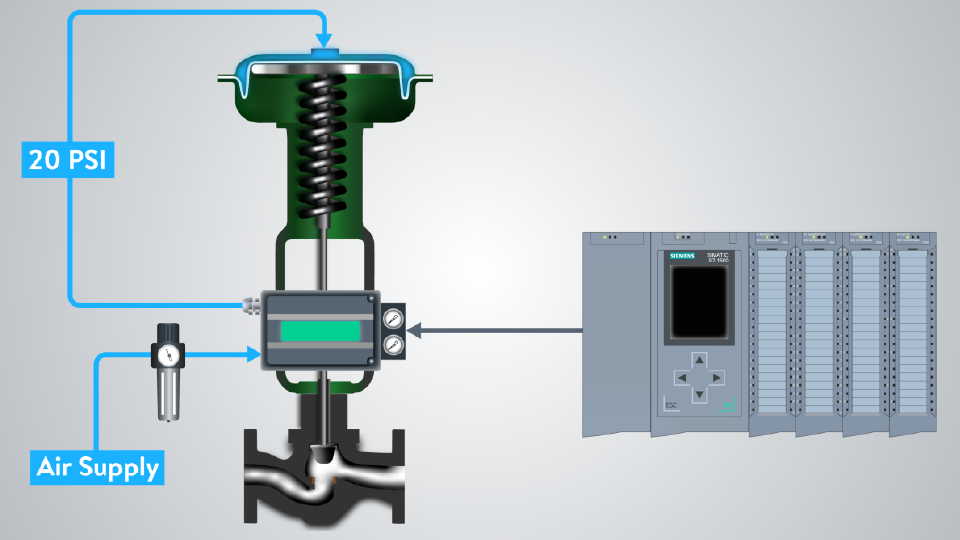How Control Valves Impact Energy Efficiency in Industrial Settings
How Control Valves Impact Energy Efficiency in Industrial Settings
Blog Article

Maximize Energy Cost Savings and Convenience With Advanced Building Automation Controls
In the realm of contemporary style and center administration, the assimilation of innovative building automation regulates stands as a crucial improvement. The convergence of modern technology and sustainability has birthed a brand-new age where energy effectiveness, convenience optimization, and functional streamlining are no more achievable facts but distant desires. By harnessing the power of automation, structures can adjust, respond, and develop in manner ins which were when inconceivable. The possibility for considerable energy cost savings and enhanced convenience is not just an opportunity yet a guarantee waiting to be fulfilled. This standard shift in building monitoring holds the key to opening a globe where ecological conscientiousness and passenger well-being sympathetically exist together within the walls of our frameworks.
Energy Effectiveness Advantages
Energy effectiveness benefits can significantly minimize energy usage and functional expenses in structures. Energy-efficient systems, such as innovative structure automation controls, can optimize the use of resources like cooling, lighting, and heating, leading to reduced power expenses over time.
In addition, enhanced energy efficiency can prolong the life-span of structure tools and systems. By operating more efficiently, heating and cooling systems, lighting components, and other structure parts experience much less deterioration, resulting in reduced maintenance and substitute expenses. Additionally, energy-efficient buildings usually command greater residential or commercial property worths and rental prices, providing lasting monetary advantages to owners.
In addition, power effectiveness can boost passenger convenience and performance. Effectively controlled indoor atmospheres with ideal lights and thermal problems produce an even more helpful and pleasant workspace, leading to boosted staff member complete satisfaction and performance. In general, the power efficiency advantages related to sophisticated structure automation controls are multifaceted, including expense savings, environmental stewardship, and owner wellness.
Improved Comfort Control
Enhancing convenience control in structure settings needs an advanced integration of advanced automation systems for optimum resident health. By making use of advanced building automation controls, facilities can customize the interior environment to fulfill the specific demands and preferences of occupants. control valves.
By incorporating these sophisticated controls, structures can not only enhance convenience yet likewise enhance energy performance by optimizing system operations based on actual tenancy and usage patterns. Inevitably, focusing on owner comfort with advanced automation systems leads to a more delightful and much healthier indoor environment.
Operational Performance Improvements

Additionally, the implementation of real-time surveillance and analytics tools enables building operators to official website determine power inadequacies and operational abnormalities promptly. By continually monitoring power usage patterns and system efficiency metrics, modifications can be made in real-time to enhance energy intake and make certain peak operational efficiency. control valves. In addition, integrating demand response techniques into building automation controls can even more boost functional effectiveness by dynamically adjusting power usage based on grid problems and pricing signals
Indoor Environment Optimization
Efficient interior climate optimization is an essential facet of structure automation controls, guaranteeing residents' convenience and wellness while maximizing power cost savings. By using innovative sensors and controls, building automation systems can continuously keep track of and change temperature level, humidity levels, air quality, and air flow to develop an optimum indoor setting. Maintaining constant and comfy problems not only improves passenger satisfaction yet likewise enhances efficiency and overall well-being.
Interior climate optimization likewise plays a vital role in power efficiency. By fine-tuning cooling, ventilation, and home heating systems based upon real-time data and occupancy patterns, developing automation controls can considerably decrease power intake - control valves. For circumstances, applying strategies such as demand-controlled air flow and thermal zoning can aid decrease power waste while making certain that each location of the structure receives the needed conditioning.

Sustainable Setting Development
Structure automation controls not only maximize indoor environment problems for energy effectiveness and occupant convenience yet additionally lay the foundation for producing a sustainable atmosphere with tactical management of systems and sources. By integrating advanced building automation modern technologies, such as sensors, actuators, and intelligent software, facilities can check and adjust power use in real-time to decrease waste and reduce their carbon impact. These systems allow anticipating maintenance, identifying potential issues before they intensify and maximizing equipment efficiency to improve long life and efficiency.
Furthermore, sustainable environment creation extends beyond energy management to include water preservation, waste decrease, and interior air high quality renovation. Structure automation controls can manage water use, discover leakages, and make sure correct garbage disposal methods, adding to total sustainability initiatives. Additionally, find out here by managing and keeping an eye on air flow and filtering systems, these innovations boost occupant health and wellness and productivity while reducing energy intake associated with heating and cooling operations.
Verdict
To conclude, advanced structure automation manages offer considerable benefits in regards to energy financial savings, convenience control, functional effectiveness, interior climate optimization, and producing a lasting setting. By executing these controls, buildings can achieve optimal efficiency while reducing power intake and improving owner comfort. It appears that making use of innovative automation innovation is vital in enhancing building performance and creating a much more lasting future.
Energy efficiency advantages can substantially minimize energy usage and functional expenses in buildings. Generally, the power performance benefits linked with innovative structure automation controls are complex, incorporating cost financial savings, environmental stewardship, and occupant health.
Furthermore, including need feedback strategies into structure automation controls can additionally boost functional effectiveness by dynamically readjusting power usage based on grid problems and rates signals.
Structure automation manages not just maximize interior climate conditions for energy effectiveness and owner convenience but additionally lay the foundation for developing a lasting environment via strategic administration of systems and resources.In verdict, advanced structure automation manages deal substantial advantages in terms of power financial savings, convenience control, functional performance, indoor climate optimization, and developing a lasting setting.
Report this page